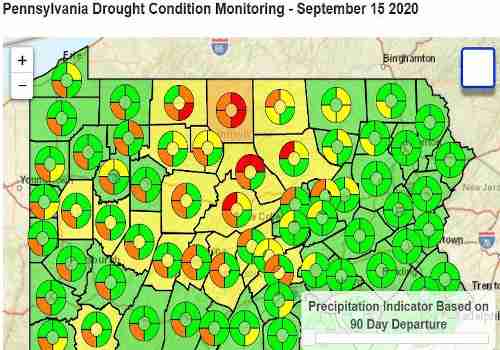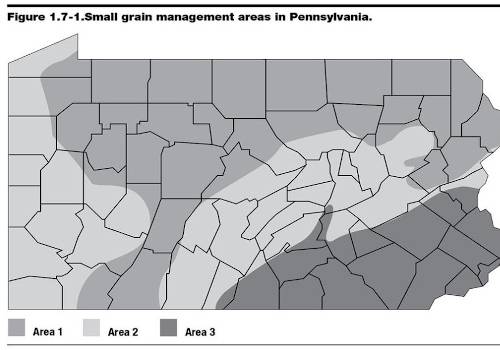By Nicole Santangelo

Planting of winter wheat is right around the corner with ideal dates of September 20 to October 3 in the Allegheny Plateau and Laurel Highlands (Area 1), September 25 to October 8 in Ridge and Valley and Western foothills (Area 2) and October 1 to October 15 in the Southeast (Area 3), which can be seen in Figure 1.7-1 of the Agronomy Guide. Following the ideal planting dates can ensure low weed pressure and lowers risk of pests such as Hessian fly, powdery mildew and barley yellow dwarf. Research in northern Oklahoma has shown a decrease in grain yield related to test weight when planted too early.
However, dry weather in much of the state may have you considering waiting for rain to plant. This is a good option, as it gives flexibility to choose a spring wheat if adequate rain doesn’t arrive. Another option is to plant wheat assuming adequate rain will come before the last planting date. We risk the wheat not getting the best start, and possible soil crusting should rain occur after planting. This may give us the best chance at getting wheat in during the optimum time.
You may also choose to plant deeper into moisture, however in fields where pH is suboptimal, or soils can harden, this could be risky. Evaluate your current soil conditions to determine planting depth and date. Typical seeding depth is 1.0 to 1.25 inches deep. Seeding in narrower rows or increasing seeding rate may have an advantage in dry weather but be sure not to cut corners in a dry fall planting to be sure the wheat is off to the best start before winter.
